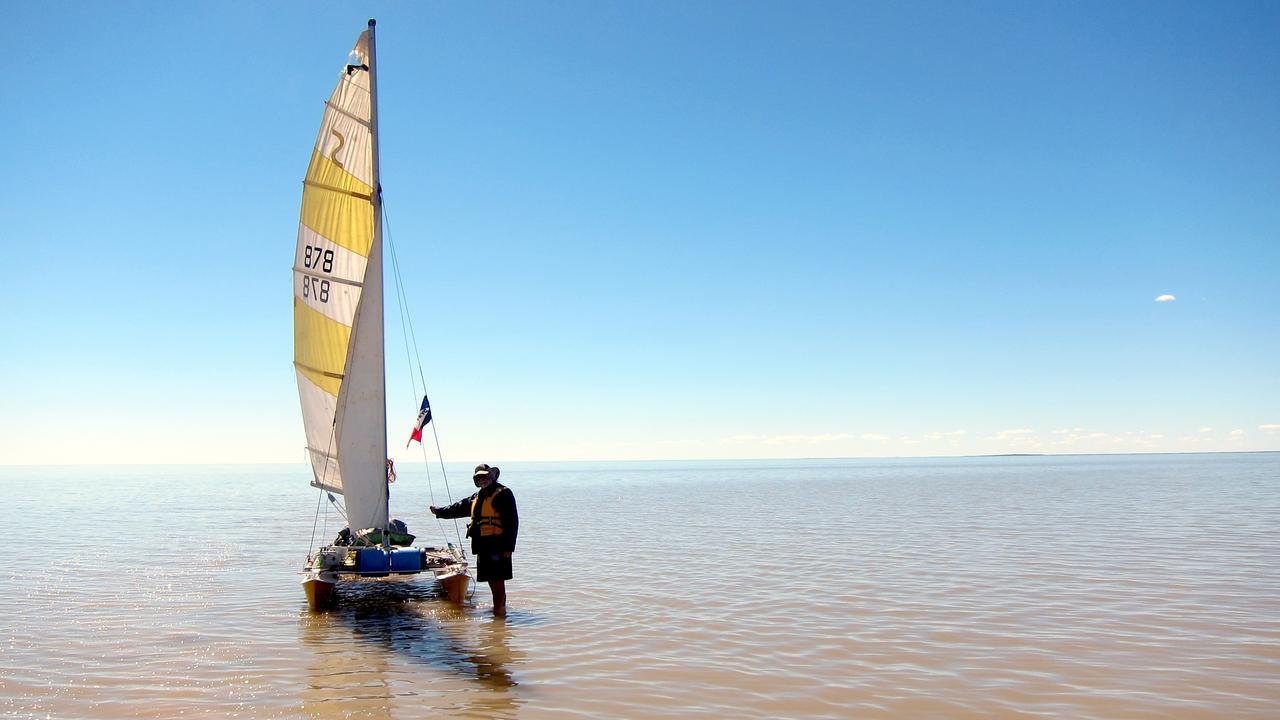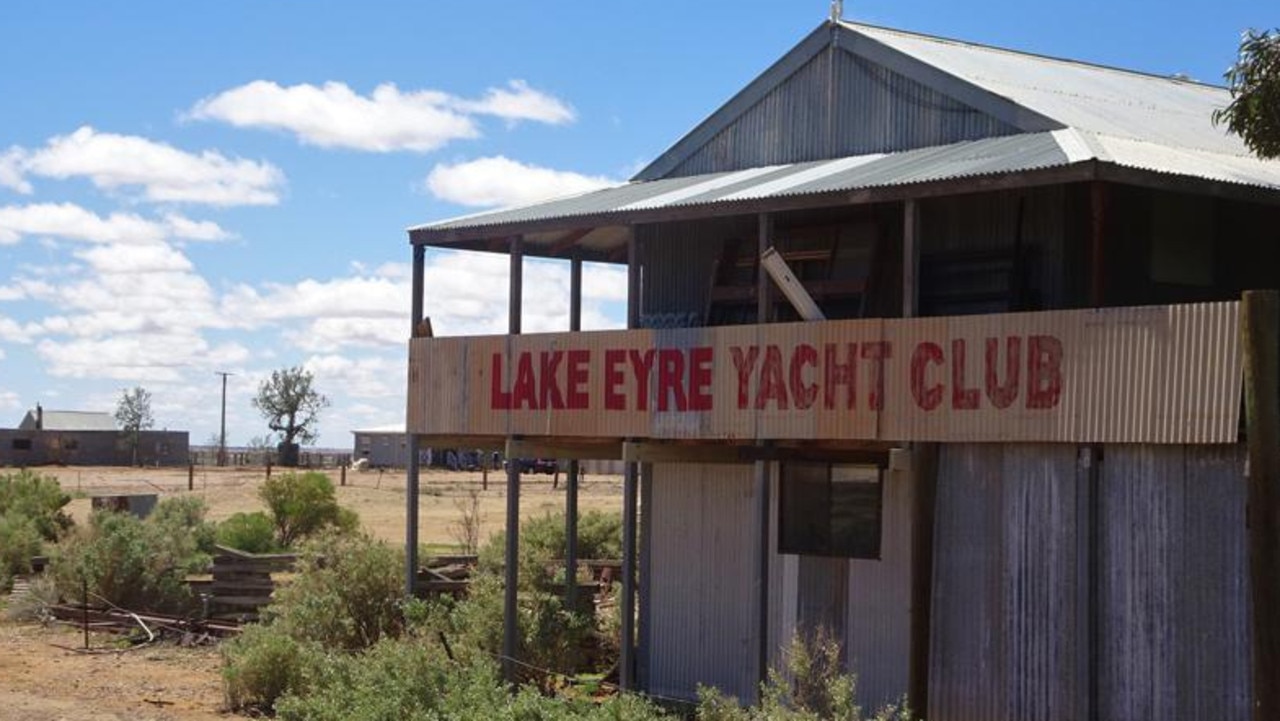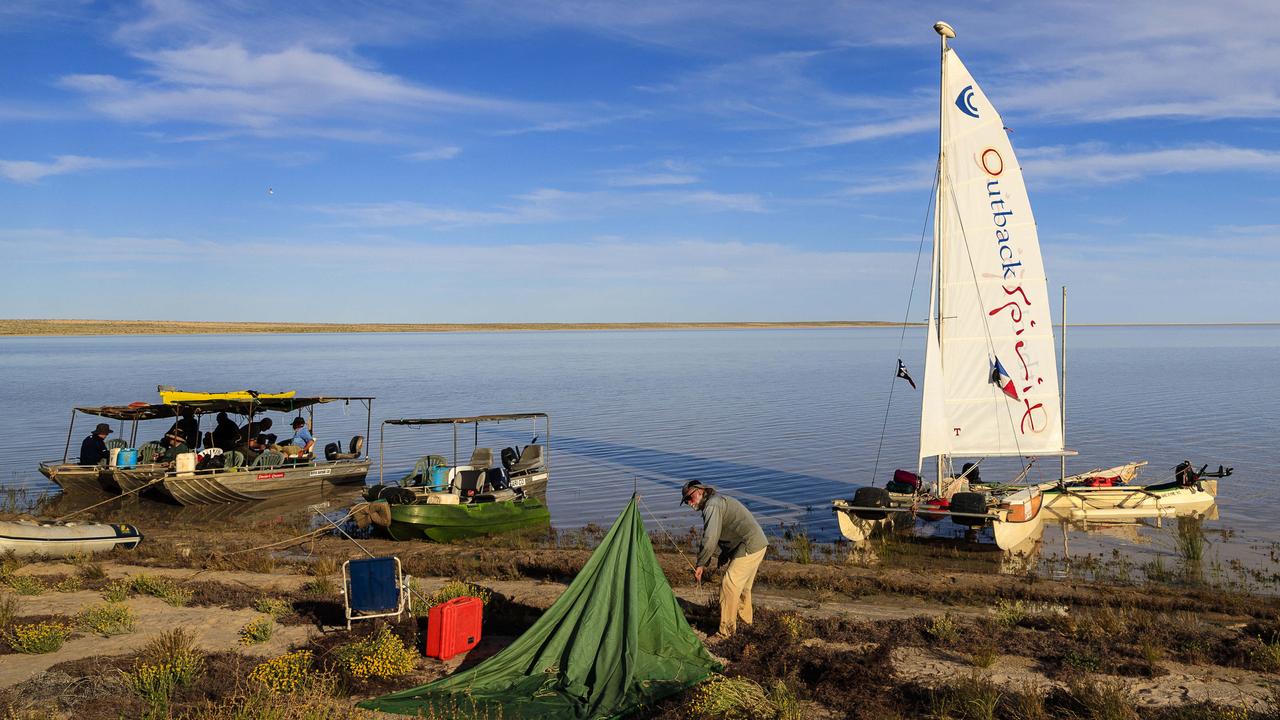Tourists to Kati Thanda-Lake Eyre can only witness the inland sea by air or viewing platforms
As Queensland floodwaters continue to fill Kati Thanda-Lake Eyre, yachties are threatening to defy a new ‘hypocritical’ recreation ban.
SA News
Don't miss out on the headlines from SA News. Followed categories will be added to My News.
Yachties are threatening to defy a South Australian ban that stops walking and recreation on Kati Thanda-Lake Eyre, as floodwaters start flowing into Australia’s largest inland sea.
Queensland floodwater is filling the lake’s northern inlet, but changes to its management plan mean the natural phenomenon can only be admired from the air or viewing platforms.

In February, the SA National Parks and Wildlife Service restricted access to the lake, which spans 9500sq km, and was backed by traditional owners, the Arabana people.
The predominantly dry salt lake experiences large flood events every decade and tourist numbers swell from 5000 in a dry year to 25,000 when it floods.
Experts predict water from Cooper Creek will flow into the lake for the first time since 2011.
Lake Eyre Yacht Club commodore Bob Backway said the ban, which was enforced for public safety, was “hypocritical” given other salt lakes still had public access.
“The lake is not dangerous from a sailing point of view,” Mr Backway said.
“There’s Lake Gairdner which they have drag races on in the Gawler Ranges, which they’ve been doing for years and it’s a national park, this is just so hypocritical.”

The club of 300 members from “Rockhampton to Tasmania” only sailed when water levels permitted, which for Mr Backway was on Lake Eyre South in 2022.
“It’s definitely not being overused and we have strict rules when we’re sailing,” he said.
“We bring all our rubbish back and we have a policy of not landing on rookeries.”
Mr Backway said he had already been sent a letter saying contravening the ban could result in a fine of up to $1000, which was “unbelievable”.
“A national park is a recreational area and they’re banning recreation,” he said.
“Some of our members are saying $1000 is a cheap holiday.”
Mr Backway believed there was a “secret agenda” behind the ban, as Geoscience Australia had identified the salt lake as being a potential source of lithium, pot ash and boron.

Environment Minister Susan Close said the ban was out of respect for the Arabana people, ecological reasons and safety of visitors to the “harsh” outback.
“It’s easy to lose your sense of direction and get lost,” Dr Close said. “Parts of the lake surface are unstable people could sink into the lake bed, cutting themselves on the gypsum below the surface.”
She added boating, swimming and driving were banned at the site in 1985 when it was declared a national park, however there were no plans to reduce access to other salt lakes, in particular Lake Gairdner.

“Dry lake races and speed trials occur on that lake with approval of the Gawler Ranges people, under licence and strict conditions,” she said.
Dr Close said Kati Thanda-Lake Eyre National Park was proclaimed to allow mining access and there were licences covering mineral, petroleum and gas storage exploration.
“The exploration is conducted using desktop analysis and there is no on-ground mining activity within the park,” she said.
On-ground mining required ministerial approval, following an environmental assessment.
Dr Close said the government was expanding national parks, including the recent addition of 725ha to three parks and a proposal to add 1840ha to the Seal Bay sanctuary zone.
Those caught flouting the Kati Thanda-Lake Eyre ban face an initial fine of $75, or a court imposed fine of $1000 for repeat offences.
The Arabana Aboriginal Corporation was contacted for comment.
Originally published as Tourists to Kati Thanda-Lake Eyre can only witness the inland sea by air or viewing platforms









